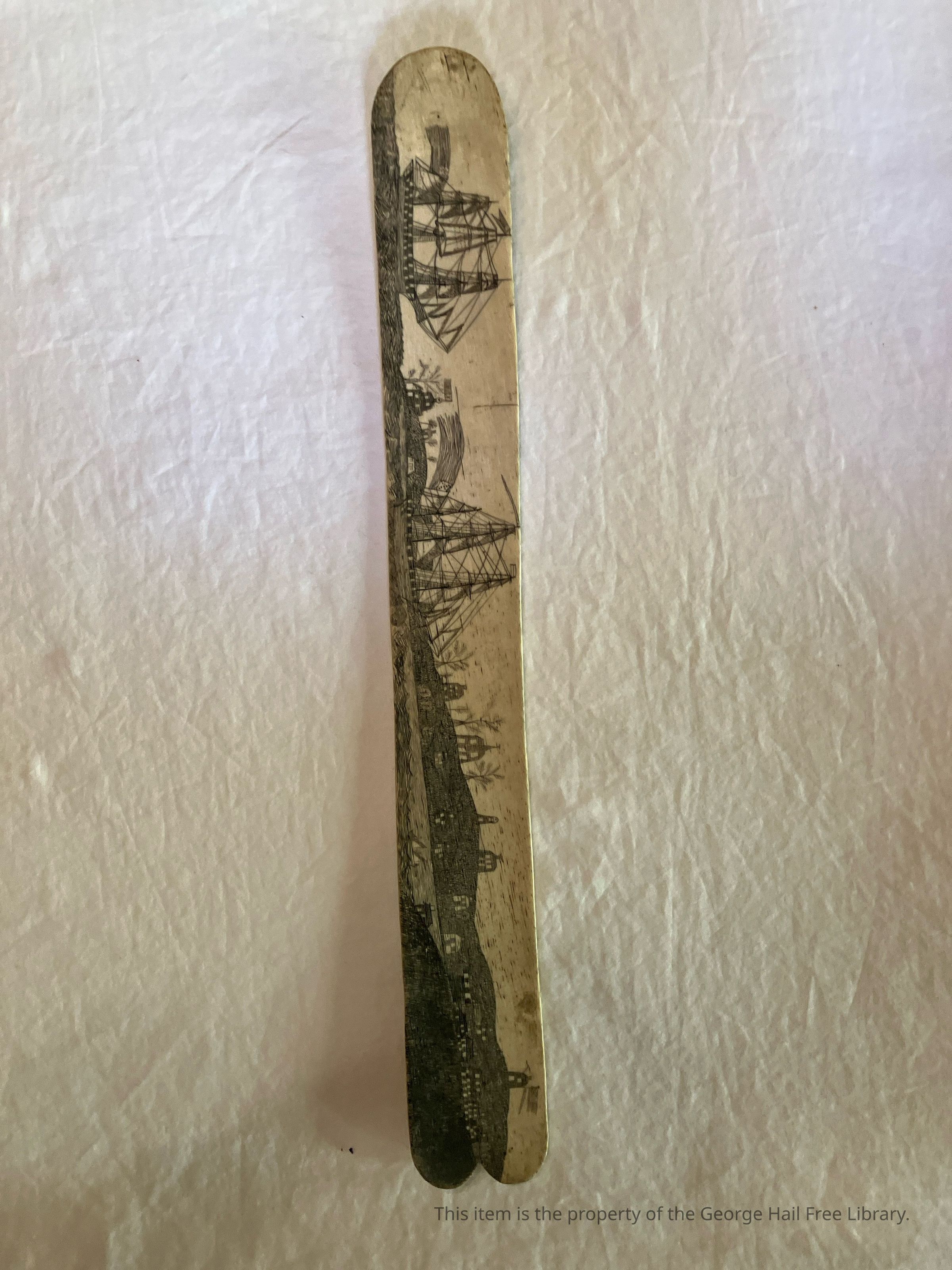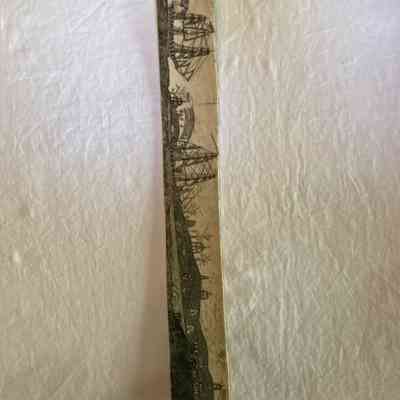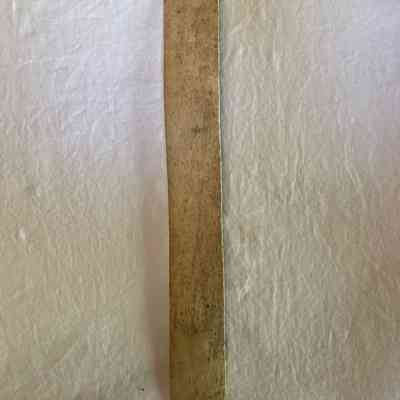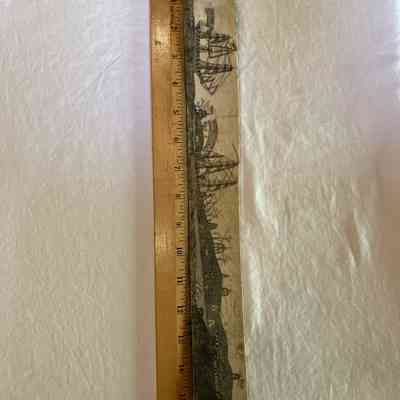Scrimshaw Busk with Engraving of Ships and Land
Name/Title
Scrimshaw Busk with Engraving of Ships and LandEntry/Object ID
2025.04.21.03Description
Busks were used in women's clothing from the 1600s--1900s to provide a desirable shape. Many were made from whale baleen and sailors would sometimes carve them and give them to loved ones as gifts.Use
Busks were used in women's clothing from the 1600s--1900s to provide a desirable shape. Many were made from whale baleen and sailors would sometimes carve them and give them to loved ones as gifts. Use A busk (also spelled busque) is a rigid element of a corset at the center front of the garment. Two types exist, one- and two-part busks. Single-piece busks were used in "stays" and bodices from the sixteenth to early nineteenth centuries and were intended to keep the front of the corset or bodice straight and upright. They were typically made of wood, ivory, or bone slipped into a pocket and tied in place with a lace called the busk point. These busks were often carved and decorated, or inscribed with messages, and were popular gifts from men to women during courtship. Busks made from whale baleen first appear in the wardrobe accounts of Elizabeth I in the 1580s. (Source: https://en.wikipedia.org/wiki/Busk_(corsetry)).Context
Busk made from baleenMade/Created
Time Period
19th CenturyLexicon
Nomenclature 4.0
Nomenclature Tertiary Object Term
ScrimshawNomenclature Secondary Object Term
BuskNomenclature Secondary Object Term
CarvingNomenclature Primary Object Term
Garment, FoundationNomenclature Primary Object Term
SculptureNomenclature Sub-Class
UnderwearNomenclature Class
ClothingNomenclature Class
ArtNomenclature Category
Category 03: Personal ObjectsNomenclature Category
Category 08: Communication ObjectsGetty AAT
Concept
busks, scrimshawsDimensions
Width
1-7/8 inLength
15-1/4 inMaterial
whale boneLocation
Location
Cabinet
Display Case 6Room
Charles Whipple Greene Historical CollectionBuilding
George Hail Free LibraryDate
April 21, 2025Condition
Overall Condition
GoodExhibitions
Scrimshaw
Women in Warren



